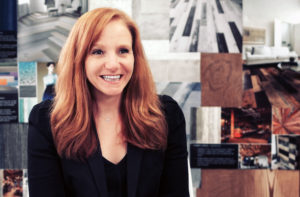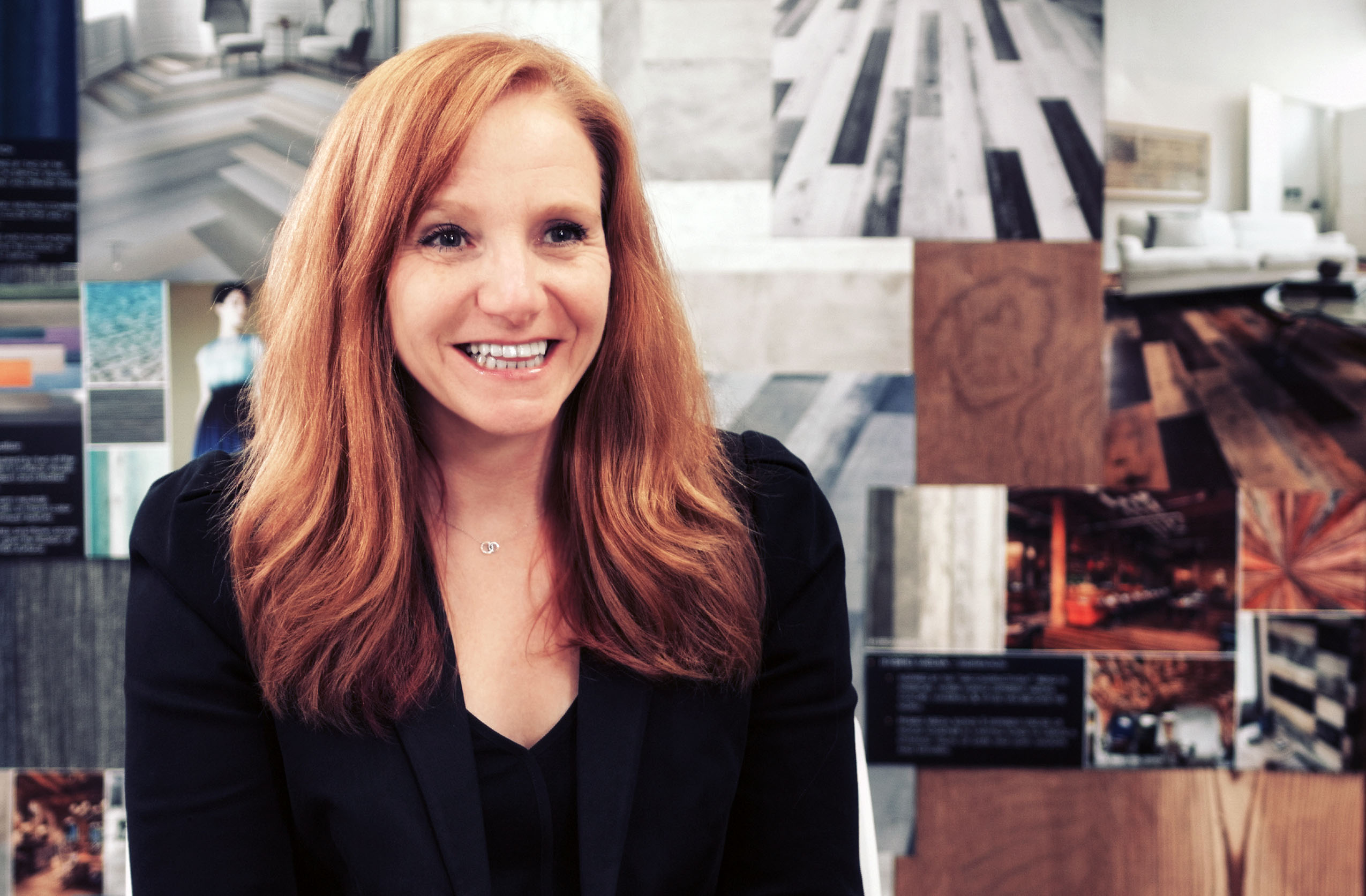Healthcare Design interviewed four leading product designers who shed light on the healthcare challenges they’re working to solve and the inspiration that guides them. Here, Di Anna Borders from Mohawk Group shares her story.
 Position: design director, healthcare, senior living, and education, Mohawk Group
Position: design director, healthcare, senior living, and education, Mohawk Group
Location: Dalton, Ga.
Years working in design: 16
Years in current role: 3
Product categories: resilient flooring, carpet tile, and broadloom
Market segments: healthcare, senior living, and education
Healthcare Design: Share a little about your professional background and what drew you to a career in design.
Di Anna Borders: I started out in 2003 working in building products for the hospitality sector, where I designed commercial wallcoverings. When the economy took a hit in 2008, the hospitality sector was hit hard and I moved on to flooring design as principal designer at Armstrong Flooring, designing an array of hard-surface products from vinyl composition tile to luxury vinyl tile. From there, I moved to IVC, which was later acquired by Mohawk. That’s when I entered my current role.
How did you become interested in product design, specifically?
Before product design, I was a graphic designer when the world was first going internet crazy and design was becoming a virtual animal. I decided to take a leap into product design to stay in touch with the physical aspect of design. I wanted to touch and feel the fruits of my labor, rather than have them just existing on a server.
Tell us about your current role.
My team at Mohawk Group designs for the healthcare, senior living, and education segments. My role is to lead the team to design products that are thoughtful and meaningful and make a positive impact on the built environment. We spend a lot of time researching not only current trends in color and design, but also the science and evidence behind how interiors can positively affect inhabitants.
I feel it’s important to have the research behind the design. It’s one thing for me to create beautiful aesthetics and tell the customer it will be beneficial, but having the evidence and research to back that up can be a very powerful tool. Then, it becomes fact-based instead of just my opinion. I have seen firsthand over the last two years, being in treatment for breast cancer, how your environment can affect your recovery, anxiety level, and confidence in the care you’re given. I actually walked out of my first treatment center in the middle of an appointment because the surroundings were so uninviting. I couldn’t imagine going through months of treatment in that environment.
Describe the first time you worked on a healthcare product. What did you learn from that process/experience?
At some point in your career, you ask yourself, “What can I do to make a difference in the world?” The turning point for me came in a plea from Michael Graves to an audience full of hospitality designers at HD Expo to storm the gates of healthcare design and change the built environment from institutional to healing and nurturing. And that has been my goal ever since. My first step was to start researching and learning everything I could about evidence-based design and how flooring could play a role. I learned a lot about the healthcare industry and how difficult it can be to change design culture. We had to figure out ways to bring that hospitality feel to healthcare while still meeting all the technical needs for the environment. Sometimes that meant we would design a beautiful wood-look floor with a great texture and low luster for realism, just to have the customer put a high-gloss polish on it because “shiny equals clean.” We had to educate not only ourselves but our customer, as well.
How is healthcare different from other sectors?
Designing for healthcare is unlike any other segment. Not only does it need to be aesthetically pleasing, but it also has to perform at the highest level possible. In the early days, those two attributes didn’t always exist in one product. However, with technology continuing to improve, the two are coming together. Also, there’s a heightened sense of the built environment in the healthcare segment and how it affects patients and staff. The health and happiness of the people in the space are top priorities. The products we create have to meet those needs and, in turn, we become partners with our customers to create facilities and communities that have a positive impact on people’s lives.
What challenges do you frequently hear from clients, and how are you working to solve them?
One of the biggest design-related challenges we hear is being able to find cross-platform flooring products from a single manufacturer that coordinate easily—especially when it comes to hard and soft surface. You can’t create a carpet tile collection and ignore all the hard surface that will be used around it. You have to think about how your customer designs the space holistically.
What inspires you? Give us a snapshot of your creative process.
As a designer, you never stop thinking about design. Inspiration can come in the strangest forms—from the way leaves make shadows on the ground on your morning walk to a great exhibit in a metro museum. Our creative process starts with the vision of positive change. Our entire team meets once a year to talk through what we’re seeing in the market on a product level and in the world as a whole. From those discussions, we create a macro-level design vision that serves as our purposeful guide to shape our portfolio over the next two years.
Is there one healthcare product you’ve designed that stands out to you?
One of the most needed and hardest products to get right for acute care is sheet vinyl. The very first collection I designed was a hard sell to upper management, who was used to the traditional wood-look of heterogenous sheet vinyl. I must have interviewed more than 50 interior design firms to find out what they really wanted instead of designing what we thought they wanted. It seems like such an easy idea, but many product designers either don’t have the time because of the fast-paced product development cycle or the company culture and support to do it.
Out of all that research, we were able to create a beautiful new collection that met the needs and desires of our customers perfectly, including what were at the time groundbreaking textile and decorative visuals that the healthcare market was missing. We made sure to include the ubiquitous wood visuals, but also added rich coordinating textile looks—think tweed and men’s suiting—paired with a damask, inspired by my wallcovering design days. A striated texture design ended up being the biggest hit of the collection, because it wasn’t trying to imitate wood or stone but still had that biophilic essence.
What do you hope to have the opportunity to design in the future?
As technology continues to improve and invade every aspect of our lives, I look forward to how it can change the role of flooring in the space. How can smart technology, for instance, enhance flooring, making it a tool for healthcare?













